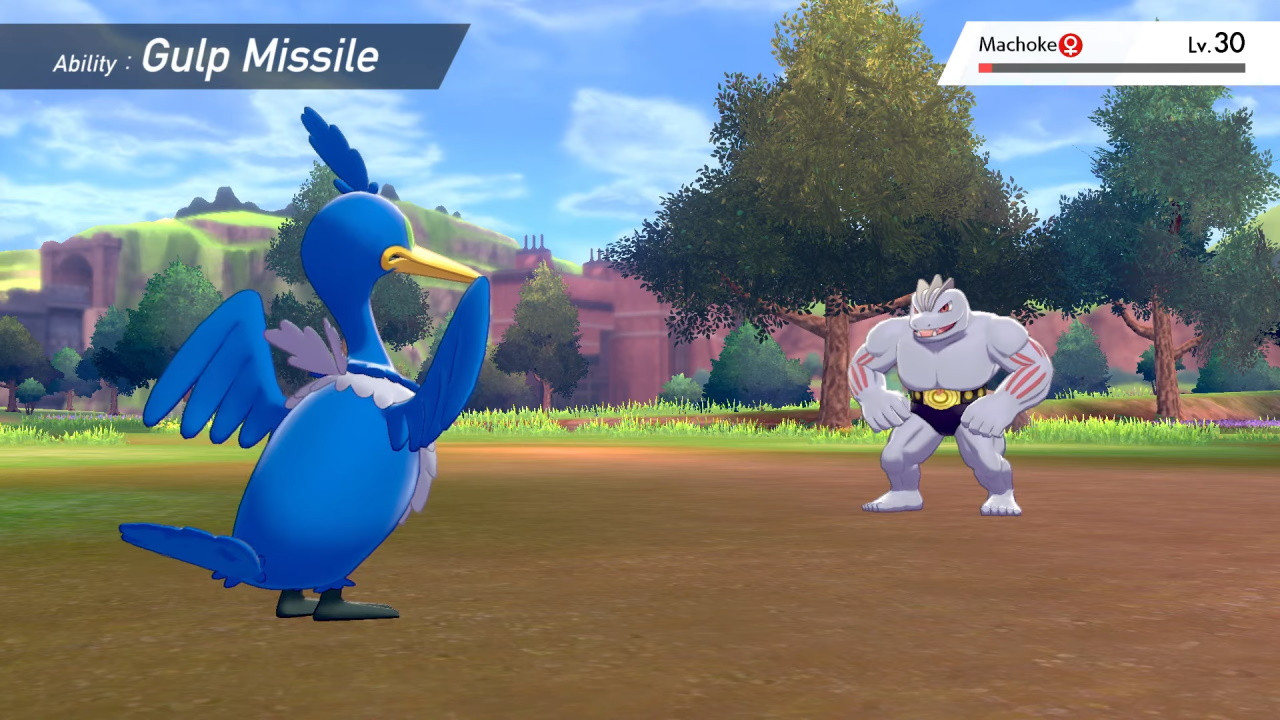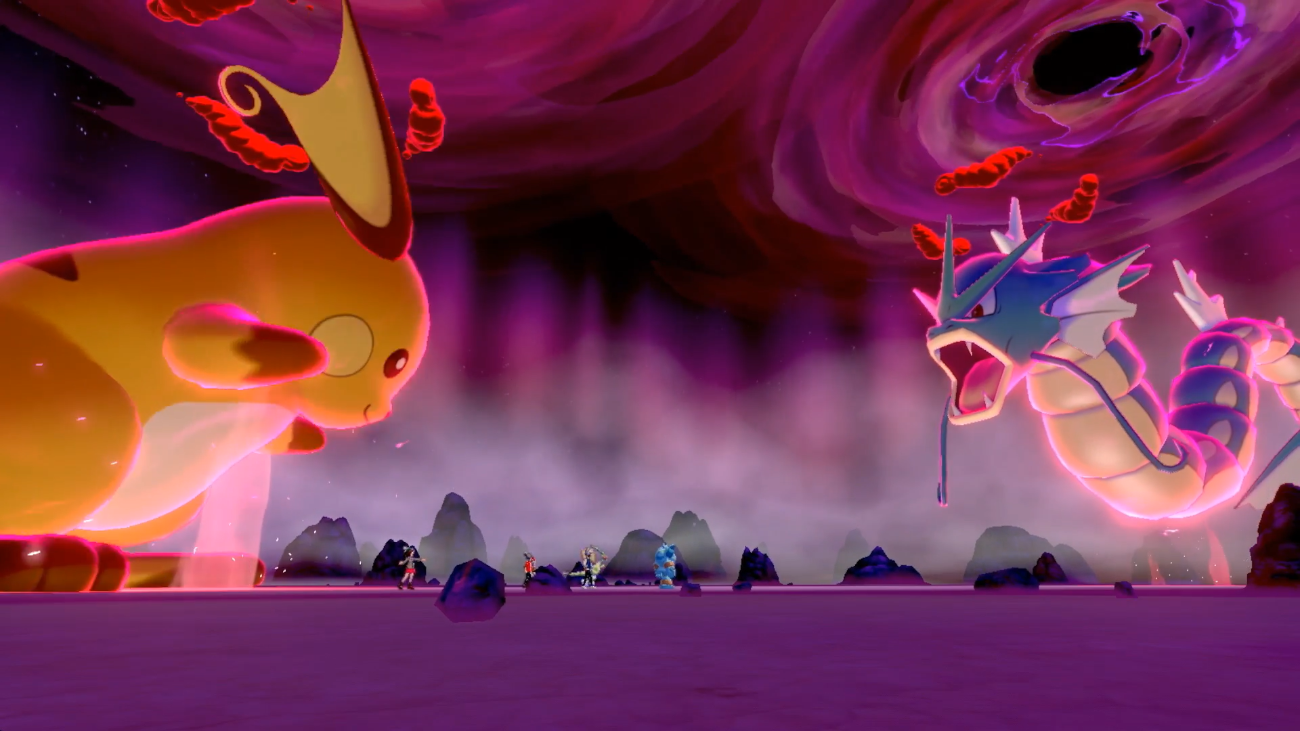Pokemon Sword/Shield Review for Nintendo Switch

Pokemon remains a rock for Nintendo handheld systems, covering two decades, eight generations, and more than two dozen core games, including remakes and expanded versions. Each one follows the same path: You explore a region, catch and train Pokemon, beat eight gym trainers, and then defeat the region’s champion. It’s simple, formulaic, and satisfying. Pokemon is gaming comfort food, and Pokemon Sword (tested) and Pokemon Shield for the Nintendo Switch are the latest dishes. These $59.99 games are the newest core Pokemon titles, heralding the eighth generation of Pokemon with the best series graphics yet. You won’t see major gameplay changes, but either version will satisfy your desire to catch cute monsters and make them fight.
Welcome to Galar
Pokemon Sword and Shield take place in the Galar region, which is based on Great Britain. This informs some of the geography, architecture, and a lot of the dialog (expect loads of English slang). Galar is best known for Dynamax energy, produced by “wishing star” stones that drop from the sky and generate vast amounts of energy. This energy powers Galar and enables a new Pokemon battle feature called Dynamaxing in areas where the energy is particularly dense.

Dynamaxing turns your normally human-sized (give or take a meter) Pokemon into a giant creature several stories tall, increasing its stats and giving it a set of new attacks. It’s visually very impressive, from the first moment that your Pokeball expands to the size of a beach ball before you launch it with two hands to produce a Pokemon kaiju.
Mechanically, Dynamaxing it isn’t much different from the Mega Evolutions featured in previous Pokemon games; your Pokemon changes form and gets more power for a few turns, then returns to normal. The only difference with Dynamaxing is that you can only use it in certain places, like Pokemon stadiums. You can, however, encounter Dynamaxed wild Pokemon for a nice change of pace. These fights against massive Pokemon only let you bring one of yours into the fight, but it can Dynamax, and you’re joined by three friends or computer-controlled trainers to fight alongside, turning it into a raid battle of sorts.
Galar also features the Wild Area, a modestly sprawling land that stretches between several cities in the region. The Wild Area is untamed, breaking the formula of direct roads connecting towns that Pokemon has used since the beginning. However, the Wild Area is relatively small, and since the Galar region is also dominated by conventional routes between locations, it feels like a free-form training and Pokemon catching zone you can wander around rather than a step towards a true open-world Pokemon game.
Eight Gym Leaders, No Surprises

Pokemon Sword and Shield’s structures sticks with series conventions. You play a new trainer who picks one of three Pokemon (a fire type, grass type, or water type unique to the region) to raise and train, who must beat eight gym leaders across the region before facing the champion and becoming the new champion. While doing this, you’re accosted by a criminal nuisance organization, and eventually go on a quest to help save the land. It’s standard Pokemon stuff.
There are a few small twists to make the formula feel at least a little fresh, though. The gym challenge is a formal sporting event in Galar, which gives the proceedings a competitive edge previous Pokemon games lack. It culminates in a tournament-like battle with trainers before facing the champion rather than the typical Elite Four boss rush found in every other Pokemon game. Also, the enemy organization, Team Yell, is more of a rowdy annoyance than outright evil; it’s the Pokemon version of soccer hooligans cheering on their chosen trainer to win.
New Pokemon

Of course, there are almost 100 new Pokemon to catch in the Galar region, along with dozens from previous games including Galar-specific variants like a Wheezing that looks like it’s wearing top hats. You won’t see every Pokemon, though; the ones available in the game are still just a fraction of the 800-plus Pokemon the series has had over the years.
The limited number of Pokemon gives rise to a bigger problem with Pokemon Sword and Shield: the lack of cross-generation transfers. Nintendo tinkered with the idea of easily storing and swapping Pokemon between your different game generations with the Pokemon Bank service in Pokemon X/Y, Sun/Moon, and Alpha Ruby/Omega Sapphire. Pokemon: Let’s Go Eevee/Pikachu didn’t support the service, but at the time it seemed that this was an obvious omission since those two games are remakes of the very first generation of Pokemon games, and would only support the first 150 Pokemon.
Pokemon Bank doesn’t work with Sword/Shield, either, so the game’s incomplete collection will remain incomplete. Unfortunately, not every first-generation Pokemon is in the game, so you can’t even transfer Pokemon from Eevee/Pikachu (though if you have save data you can get a special Eevee or Pikachu in Sword/Shield).
On the bright side, the limited number of Pokemon in Sword/Shield let the developers focus on creating fairly detailed 3D models and animations for each one. Pokemon Sword and Shield are the best-looking Pokemon games yet, but considering every Pokemon generation’s incremental step forward in graphical quality, that isn’t a surprise. Don’t expect a huge leap in detail over Eevee/Pikachu; the different Pokemon look good and the Galar region is one of the most visually rich locations we’ve seen in the Pokemon series, but it’s still ultimately a relatively small step forward from Eevee/Pikachu, which itself was a modest step forward from Sun/Moon.
The usual selection of multiplayer features are here. You can trade with and battle with other players around you or across the world via the internet. A handy “Y-Comm” menu pops up with the press of a button, letting you initiate a trade or battle anywhere. You can even make Surprise Trades, putting your Pokemon of choice up and getting a random one from the internet. Like with most other Nintendo Switch games with online features, you need to subscribe to Nintendo Switch Online to use the online features, though no subscription is needed for local play.

A Standard, Satisfying Catch-Fest
At heart, Pokemon Sword and Shield are just more Pokemon games. And that’s good. Pokemon as a formula has worked well for 20 years, and as long as the series doesn’t become annualized, there’s enough time between each release that every new game provides the same monster-catching comfort food enjoyment. There aren’t many surprises to be found, but the games are still a nice, big helping of familiar, engaging Pokemon collecting.
Bottom Line: Pokemon Sword and Shield won’t throw many surprises your way, but they both offer the great Pokemon experience that’s worked for two decades. The game boasts a new region to explore, as well as new monsters and combat.




